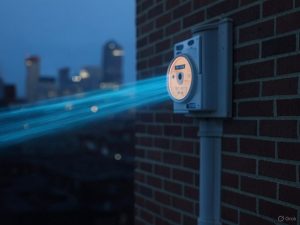Back in 2011, the World Health Organization’s International Agency for Research on Cancer (IARC) made a big call: they labeled wireless radiation—those invisible waves from cell phones, Wi-Fi, and other devices—as a “Possible Human Carcinogen” (Group 2B). That means they thought it might cause cancer, but they weren’t 100% sure. Fast forward to today, February 21, 2025, and the conversation has evolved. New research has piled up, and some experts now argue it’s time to rethink that label—maybe even upgrade it to “probable” or “proven” carcinogen. Here’s a fresh look at what the IARC says, why it matters, and what you can do about it, based on info from the Environmental Health Trust (EHT) website (original source here).
The 2011 Starting Point
In 2011, the IARC reviewed a ton of studies and decided radiofrequency radiation (RFR)—another name for wireless radiation—could possibly cause cancer, especially brain cancer like glioma. They based this on evidence linking long-term cell phone use to tumors. At the time, IARC’s Director, Christopher Wild, didn’t just sit on the fence—he urged people to take simple steps to cut exposure, like using hands-free devices or texting instead of calling. The message was clear: we need more research, but let’s be cautious now.
You can dig into the details yourself with the 2011 IARC Press Release, The Lancet’s 2011 statement, or the full IARC Monograph.
What’s New Since 2011?
Since that first classification, the evidence has grown stronger. Studies keep showing links between wireless radiation and cancer risks:
- A 2020 analysis found people using cell phones for over 1,000 hours had a higher tumor risk (Choi et al., 2020).
- A French study showed half an hour of daily phone use over five years bumped up tumor chances (Coureau et al., 2014).
- Women who tuck phones in their bras might face a higher breast cancer risk (West et al., 2013; Shih et al., 2020).
- A Yale study tied heavy phone use to thyroid cancer in people with certain genes (Luo et al., 2020).
- Big animal studies—like one from the National Toxicology Program (NTP, 2018)—found tumors in rats exposed to wireless radiation, matching the tumor types seen in human phone users (Hardell, 2018).
Because of this, the IARC’s advisory group in 2019 called for a fresh look at wireless radiation’s cancer risk, labeling it a “high priority” for review by 2024. Check out their report here.
Experts Speak Out
Some big names from the 2011 IARC team now say the “possible” label doesn’t cut it anymore. Here’s what they’re saying:
- Dr. Lennart Hardell: “RF radiation is a human carcinogen, Group 1,” pointing to clear evidence of brain and thyroid cancers.
- Dr. Anthony Miller: “It’s time to call it carcinogenic to humans” based on the latest data.
- Dr. Chris Portier: In a 2021 lawsuit against phone companies, he said RF exposure “probably causes” brain tumors, backed by a 176-page report.
- Dr. Dariusz Leszczynski: He’d upgrade it to “probable” (Group 2A) and pushes for wired connections over wireless.
These experts, along with others like Ronald Melnick and James Lin, argue the science has moved beyond “maybe.” They see animal studies, human data, and biological clues—like DNA damage from radiation—as a strong case.
Kids and Caution
The IARC’s 2013 Monograph noted kids absorb more radiation—twice as much in their brains, ten times more in their skull’s bone marrow. That’s why the WHO’s been saying since 2002 (and again in 2010’s Research Agenda) that we need to protect kids and dig deeper into risks like cancer and brain development issues. Over 200 scientists even appealed to the WHO and UN in 2015, urging action to lower these risks, especially for kids.
WHO vs. WHO: A Confusion to Clear Up
Here’s a twist: the IARC is part of the WHO, but it’s not the same as the WHO’s EMF Project. The EMF Project, started with industry cash, has been called out for bias—its one paid staffer is an engineer with wireless industry ties, and it’s unclear who writes its fact sheets. Critics, like a 2017 piece in the International Journal of Oncology, say it downplays risks. The IARC, though, vets its experts for conflicts and is seen as the gold standard for spotting carcinogens. That’s why EHT focuses on IARC’s take.
What Can You Do?
The IARC still recommends cutting exposure—think speakerphone, texting, or wired headsets. With 5G and smart devices everywhere in 2025, that advice feels more relevant than ever. Experts like Leszczynski say go wired when you can. The science isn’t settled, but it’s leaning toward caution.
The Bottom Line
The IARC’s 2011 “possible carcinogen” call was just the start. Today, with more studies showing cancer links and experts pushing for a stronger warning, wireless radiation’s risks are hard to ignore. The WHO’s IARC is set to rethink this soon, and it might mean big changes for how we use tech. For now, it’s smart to play it safe—cut exposure where you can and stay tuned for what’s next.
Want more details, videos, or scientist statements? Dive into the full scoop at EHT’s page.






